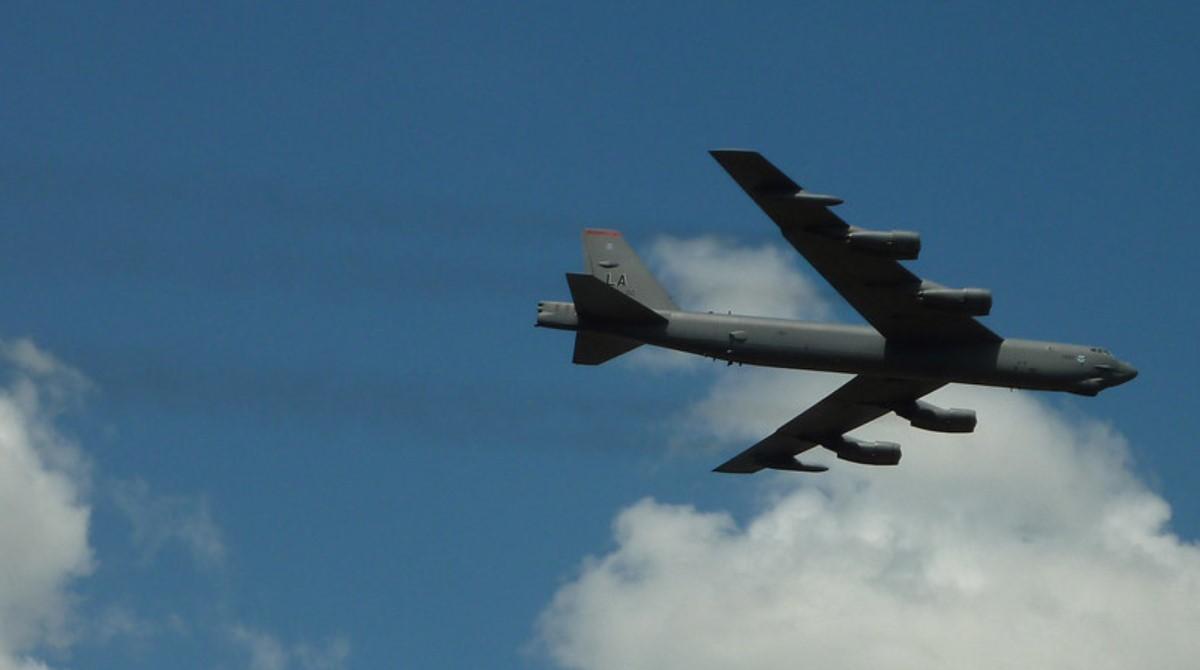Last week, the United States signed a five-year extension of the New START arms control treaty with Russia. Russia’s President Putin signed the treaty shortly thereafter. The “Strategic Arms Reduction Treaty” allows Russia and the US to monitor each other’s nuclear forces, facilities, and activities. The idea is to keep track of the relative strength of the two regimes’ respective arsenals and to encourage reductions. The treaty also caps the number of deployed strategic nuclear warheads at 1,550 each. (The total stockpiles for the US and Russia are 4,700 and 4,300, respectively.) The move is a departure from the Trump administration’s opposition to the treaty. The Trump administration had wanted to renegotiate the treaty, insisting that so-called tactical
Topics:
Ryan McMaken considers the following as important: 6b) Mises.org, Featured, newsletter
This could be interesting, too:
RIA Team writes The Importance of Emergency Funds in Retirement Planning
Nachrichten Ticker - www.finanzen.ch writes Gesetzesvorschlag in Arizona: Wird Bitcoin bald zur Staatsreserve?
Nachrichten Ticker - www.finanzen.ch writes So bewegen sich Bitcoin & Co. heute
Nachrichten Ticker - www.finanzen.ch writes Aktueller Marktbericht zu Bitcoin & Co.
 Last week, the United States signed a five-year extension of the New START arms control treaty with Russia. Russia’s President Putin signed the treaty shortly thereafter. The “Strategic Arms Reduction Treaty” allows Russia and the US to monitor each other’s nuclear forces, facilities, and activities. The idea is to keep track of the relative strength of the two regimes’ respective arsenals and to encourage reductions. The treaty also caps the number of deployed strategic nuclear warheads at 1,550 each. (The total stockpiles for the US and Russia are 4,700 and 4,300, respectively.)
Last week, the United States signed a five-year extension of the New START arms control treaty with Russia. Russia’s President Putin signed the treaty shortly thereafter. The “Strategic Arms Reduction Treaty” allows Russia and the US to monitor each other’s nuclear forces, facilities, and activities. The idea is to keep track of the relative strength of the two regimes’ respective arsenals and to encourage reductions. The treaty also caps the number of deployed strategic nuclear warheads at 1,550 each. (The total stockpiles for the US and Russia are 4,700 and 4,300, respectively.)
The move is a departure from the Trump administration’s opposition to the treaty. The Trump administration had wanted to renegotiate the treaty, insisting that so-called tactical nuclear weapons—designed for battlefield use—be included. As it is, the treaty focuses only on strategic weapons. The Trump administration also insisted that China be added to the treaty. The Chinese declined to participate. President Trump also ended two other arms treaties, the Intermediate-Range Nuclear Forces (INF) Treaty and the Open Skies Treaty.
These all may sound to many readers like rather momentous changes to policy. But this is all a lot of political theater.
Just as the Trump administration used the abrogation of these treaties as red meat for the “America first” crowd,1 the Biden administration is surely more than happy to use the treaty to demonstrate how Biden is a departure from Trump. The treaty may even offer military lobbyists the opportunity to point to Russian stockpiles and claim the US must find ways to balance or counter Russian nuclear capabilities. Putin, meanwhile, can say that he signed a treaty limiting the arsenal of the far-richer American regime, which has a lot more money to spend on nuclear weapons. For Putin, this is important because the Russian state has been looking to economize and has been reducing or moderating military spending in recent years.
In short, arms treaties like New START serve a domestic political function. They help politicians take credit for allegedly pursuing peace while also potentially justifying more military spending overall.
In practice, however, the extension of the treaty does not reduce the risk of nuclear war, and it certainly won’t make nuclear arms disappear or even be substantially reduced. It is the presence of the nuclear weapons themselves that has deterred both the US and the Russians—and the Soviets before them—from a nuclear conflict. Moreover, the arms limitations provisions of the treaty won’t change the status quo of deterrence. Both nations have more than enough nuclear capability to achieve a deterrent effect, and given the current thinking within each regime, it’s a safe bet neither will agree to a treaty which threatened to reduce arsenal levels to anywhere near levels of “minimum deterrence.”
Yet, in practice, both regimes could reduce nuclear spending and nuclear stockpiles far below current levels without sacrificing deterrence. Neither regime, however, is likely to risk making any sizable reductions. The ideal of overwhelming nuclear force still has many friends in both Washington and Moscow.
The Value of Minimum Deterrence
Whether or not politicians believe in the use of minimum deterrence has little to do with whether or not it is actually effective, and arms agreements like New START don’t do much to push regimes in this direction.
In a 1990 essay titled “Nuclear Myths and Political Realities,” Kenneth Waltz—perhaps the most influential scholar of international relations of the past fifty years—outlines how “strategic arms agreements do not have military but economic and political, significance.”2
Counting up the total number of missiles in these enormous arsenals does little, since, for nations that are already well above the threshold of achieving nuclear deterrence, these treaties don’t change the military calculus.
What really matters is the perception that the other side has second-strike capability, and this certainly exists in US-Russia relations. Once each regime knows that the other regime has second-strike capability, the competition is over. Deterrence is established. Waltz notes:
So long as two or more countries have second-strike forces, to compare them is pointless. If no state can launch a disarming attack with high confidence, force comparisons become irrelevant….Within very wide ranges, a nuclear balance is insensitive to variation in numbers and size of warheads.
The focus on second-strike capability is key because pro-arms-race policymakers are quick to note that if a regime is able (with a first strike) to destroy its enemy’s ability to retaliate in kind, then a nuclear war can be “won.”
Second-Strike Capability Evens the Score
But, as shown by Michael Gerson in International Security (2010) establishing second-strike capability—or, more importantly, the perception that a regime has it—is not as difficult as many suppose. Gerson writes:
A successful first strike would require near-perfect intelligence, surveillance, and reconnaissance (ISR) to detect, identify, and track all of the adversary’s nuclear forces; recent events surrounding U.S. assessments of Iraq’s suspected WMD [weapons of mass destruction] capabilities forcefully demonstrate the challenges of reliable, accurate, and unbiased information. Intelligence regarding where an adversary’s nuclear weapons are located and if the state is actually planning to attack could be wrong or incomplete, and an attempted first strike based on inaccurate or incomplete information could have far-reaching negative consequences.
This can be countered through a variety of methods, including secrecy and the ability to move weapons delivery systems around. This is why the US, Russian, and Chinese regimes have long been so enthusiastic about the so-called nuclear triad. It is assumed that if nuclear weapons can be delivered by submarine, aircraft, and land, then it would be impossible for an opposing regime to destroy all three at once and achieve first-strike victory.
But even in the absence of a triad, an opposing regime that seeks a total first-strike victory has few grounds for much confidence. As Waltz shows, “Nuclear weapons are small and light; they are easy to move, easy to hide, and easy to deliver in a variety of ways.” That is, if a regime manages to move around and hide even a small number of planes, subs, or trucks, this could spell disaster for the regime attempting a successful first strike. Gerson explains:
A nuclear first strike is fraught with risk and uncertainty. Could a U.S. president, the only person with the power to authorize nuclear use and a political official concerned with re-election, his or her political party, and their historical legacy, ever be entirely confident that the mission would be a complete success? What if the strike failed to destroy all of the weapons, or what if weapons were hidden in unknown areas, and the remaining weapons were used in retaliation?
Nor must it be assumed that a large number of warheads is necessary to achieve deterrence. Waltz recalls that Desmond Ball—who had advised the US on escalation strategies—convincingly asserted that the nuclear weapons necessary for deterrence numbered “not in the hundreds but in the tens.”3 Ball contended that a debilitating attack on the US could be achieved with as few as fifty warheads.
Proceeding on the assumption that an enemy has no warheads left following a first strike requires an extremely high level of confidence, because the cost of miscalculation is so high. If a regime initiates a first strike and misses only a few of the enemy’s missiles, this could lead to devastating retaliation both in terms of human life and in terms of the first-strike regime’s political prospects.
This is why Waltz concludes that a rudimentary nuclear force can achieve deterrence if there is even a small and plausible chance of second-strike capability. A small nuclear strike is nonetheless disastrous for the target, and thus “second-strike forces have to be seen in absolute terms.” Waltz correctly insists that calculating the relative dominance of one arsenal over another becomes a waste of time: “the question of dominance is pointless because one second-strike force cannot dominate another.”
The conclusion is that a small second-strike force is sufficient. Naturally, this can be attractive to smaller or cash-strapped regimes, such as the Soviet Union, which in its final decades found itself devoting ever larger amounts of its GDP to military spending.
A Minority View
This remains the minority view. Nikita Khrushchev, for example, faced much opposition to his plans to adopt a minimum deterrence posture in the Soviet Union after 1961. Conservatives in the military and Politburo were vehemently opposed to the plan, in part because it included cutting back on spending on conventional military forces. But the opposition was also due to the fact that the hardliners were quite convinced by the perceived necessity of immense, flexible, and overwhelming force.4
In the United States, of course, minimum deterrence has never been very popular, especially among conservatives. For example, spending on the US nuclear arsenal increased 50 percent under Donald Trump from 2016 to 2020. The Pentagon and Congress continue to put sizable faith in maintaining a large, diverse, and expensive arsenal.
In any case, the rejection of minimum deterrence achieves a useful political goal, as described by Waltz:
The claim that we need a seamless web of capabilities in order to deter does serve one purpose: it keeps military budgets wondrously high.
New START isn’t likely to change this, and if the treaty presented any real obstacle to military spending or the military establishment, it would be long gone. Yet the US regime could easily slash its nuclear budget and stockpile without sacrificing anything in the way of nuclear deterrence. Although much is being made in recent years of China’s growing nuclear stockpile, China’s total nuclear arms amount to a mere fraction of the US’s deployed warheads. But facts like these have never gotten in the way of the promilitary narrative on Capitol Hill.
- 1. The Trump administration’s lack of interest in any ostensible limits on the nuclear arsenal also helped pave the way for increased spending on nuclear arms. Under Trump, spending on the nuclear arsenal increased 50 percent from 2016 to 2020.
- 2. Kenneth Waltz, “Nuclear Myths and Political Realities,” American Political Science Review 84, no. 3 (September 1990): 731–45.
- 3. Waltz, p. 740.
- 4. John Erickson, “Détente, Deterrence, and ‘Military Superiority: A Soviet Dilemma,” World Today 21, no. 8 (August 1965): 339, 344.
Tags: Featured,newsletter







